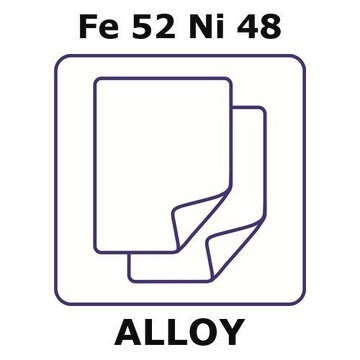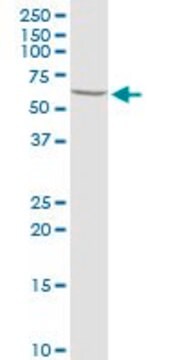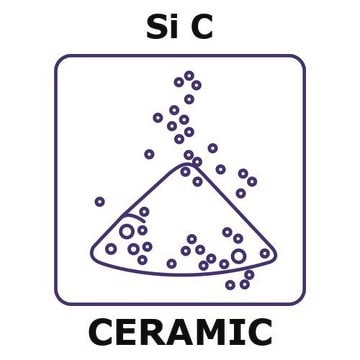GF93280732
Aluminum
rod, 500mm, diameter 15.0mm, as drawn, 99.999%
Sinónimos:
Aluminum, AL007915
Iniciar sesiónpara Ver la Fijación de precios por contrato y de la organización
About This Item
Fórmula empírica (notación de Hill):
Al
Número de CAS:
Peso molecular:
26.98
Número MDL:
Código UNSPSC:
12141702
ID de la sustancia en PubChem:
NACRES:
NA.23
Productos recomendados
Análisis
≥99.999%
formulario
rod
temp. de autoignición
1400 °F
fabricante / nombre comercial
Goodfellow 932-807-32
resistividad
2.6548 μΩ-cm
L × diám.
500 mm × 15.0 mm
bp
2460 °C (lit.)
mp
660.37 °C (lit.)
densidad
2.7 g/mL at 25 °C (lit.)
cadena SMILES
[Al]
InChI
1S/Al
Clave InChI
XAGFODPZIPBFFR-UHFFFAOYSA-N
Categorías relacionadas
Descripción general
For updated SDS information please visit www.goodfellow.com.
Información legal
Product of Goodfellow
Código de clase de almacenamiento
13 - Non Combustible Solids
Clase de riesgo para el agua (WGK)
WGK 3
Punto de inflamabilidad (°F)
Not applicable
Punto de inflamabilidad (°C)
Not applicable
Certificados de análisis (COA)
Busque Certificados de análisis (COA) introduciendo el número de lote del producto. Los números de lote se encuentran en la etiqueta del producto después de las palabras «Lot» o «Batch»
¿Ya tiene este producto?
Encuentre la documentación para los productos que ha comprado recientemente en la Biblioteca de documentos.
Ryan J Mailloux et al.
Experimental cell research, 317(16), 2231-2238 (2011-07-27)
Aluminum (Al) is a metal toxin that has been implicated in the etiology of a number of diseases including Alzheimer's, Parkinson's, dialysis encephalopathy, and osteomalacia. Al has been shown to exert its effects by disrupting lipid membrane fluidity, perturbing iron
Todd D Terhune et al.
Journal of immunotoxicology, 10(2), 210-222 (2012-09-13)
Aluminum-containing adjuvants increase the effectiveness of vaccination, but their ability to augment immune responsiveness also carries the risk of eliciting non-target responses, especially in genetically susceptible individuals. This study reviews the relevant actions of aluminum adjuvants and sources of genetic
J R Walton
Journal of Alzheimer's disease : JAD, 29(2), 255-273 (2012-02-15)
Most humans living in industrialized societies are routinely exposed to bioavailable aluminum salts in the form of additives-in commercially-prepared foods, alum-clarified drinking water, certain pharmaceuticals, sunscreens, and other topical applications. Minute amounts of this aluminum are absorbed into the circulation.
Simone Vecchi et al.
Journal of pharmaceutical sciences, 101(1), 17-20 (2011-09-16)
Aluminum (Al) salt-based adjuvants are present in a large variety of licensed vaccines and their use is widely considered for formulations in clinical trials. Although the regulatory agencies have clearly stated the acceptable levels of Al salts in vaccines for
Maire E Percy et al.
Journal of inorganic biochemistry, 105(11), 1505-1512 (2011-11-22)
In 1991, treatment with low dose intramuscular desferrioxamine (DFO), a trivalent chelator that can remove excessive iron and/or aluminum from the body, was reported to slow the progression of Alzheimer's disease (AD) by a factor of two. Twenty years later
Nuestro equipo de científicos tiene experiencia en todas las áreas de investigación: Ciencias de la vida, Ciencia de los materiales, Síntesis química, Cromatografía, Analítica y muchas otras.
Póngase en contacto con el Servicio técnico







